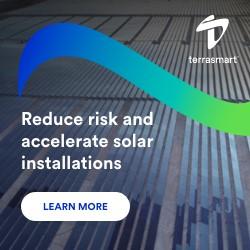NASA Seeks Proposals for Extreme Environment Solar Arrays
NASA's space technology program is seeking proposals to develop solar array systems for space power in high radiation and low solar energy environments.
In the near future, NASA will need solar cells and arrays for multiple applications in robotic and human space exploration missions. Because these systems were traditionally developed for operation near Earth, there is a need to develop new solar array concepts as NASA considers missions that require exposure to more intense radiation environments and travel ever farther from the sun.
NASA hopes to solicit proposals for the development of promising technologies to increase solar cells that will work under low intensity, low temperature and high radiation environments.
Proposals will be accepted from U.S. organizations, including NASA centers and other government agencies, federally funded research and development centers, educational institutions, industry and nonprofit organizations.
NASA's Space Technology Mission Directorate's (STMD) Game Changing Development (GCD) program expects to make as many as four awards, valued to $400,000 each for the 9-month base requirement; up to two awards for Option I, which is valued at $1.25 million and one award for Option II, with a value of $2 million.
The solicitation, entitled SpaceTech-REDDI-2015 NNH15ZOA001N-15GCD-C3 Extreme Environment Solar Power Appendix, is available through the NASA Solicitation and Proposal Integrated Review and Evaluation System website by going to "Solicitations" and then "Open Solicitations" at:
http://nspires.nasaprs.com/
Over the next year, NASA's STMD will continue to seek industry and university partnerships to assure the agency has the capabilities it needs, while helping America maintain its leadership in the technology-driven global economy. These investments will focus on in-space propulsion and advanced high-power solar arrays; robotics and avionics for outer planetary exploration, especially high-reliability and low-mass, deep ice penetration systems; advanced materials, including large composite structures; and space observatory systems, with a focus on advanced optical coating materials.
NASA's Langley Research Center in Hampton, Virginia, manages the GCD program for STMD. For more information about STMD, the program, and crosscutting space technology areas of interest to NASA, visit:
http://www.nasa.gov/spacetech
Featured Product

Terrasmart - Reduce Risk and Accelerate Solar Installations
We push the limits in renewable energy, focusing on innovation to drive progress. Pioneering new solutions and ground-breaking technology, and smarter ways of working to make progress for our clients and the industry.
